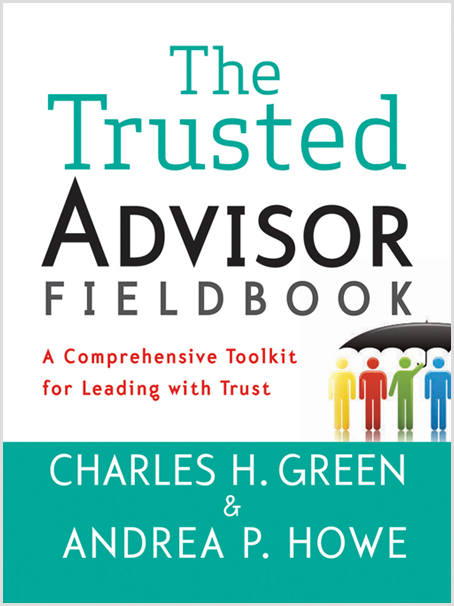This post is part of our Monthly-ish Tips series.
Think about the number of meaningful relationships you’ve had with clients over your career. There are likely hundreds. Now think about how many you’ve reached out to in the last year. Probably considerably fewer, and probably not enough—especially since they’re your best and easiest source of leads if you’re in a services business. Read on for a simple and important way around this relationship problem.
Firstly, there are thousands of reasons for the communication shortage, none of them terribly good: “It’s been too long.” “I’m not sure they want to hear from me.” “I don’t know which value prop I’d present.” “I need to review/update my CRM system first.” “I’m short on time.”
Most of these reasons have one thing at the source: fear. Fear of looking salesy, appearing unprepared, creating awkwardness, being rejected.
The antidote is simple: be in touch. Feel the fear and do it anyway. Toward that end, my very favorite business development practice is a different kind of “sales call”—one that’s not a cold call, doesn’t require an elevator speech, and has nothing to do with you pitching your value proposition.
The most powerful “sales call” is this: reach out with no agenda other than to say hello and find out how they are.
Mixed reactions to this are common, with “Duh!” at one end and “Say what?!” at the other.
Here are a few important details in case you’re closer to the “Say what?!” side:
- This suggestion assumes a prior relationship, and assumes you do actually care about them (at least a little). I don’t recommend calling someone who doesn’t know you to say, “Hey, what’s up?” And if you don’t genuinely want to know how they are, move on to someone else.
- Conventional wisdom says you should only reach out if/when you can offer something of value—and most of the time, we define “value” as a point of view, a white paper, a specific offer of help, a request. Consider the unintended consequence of clients only hearing from you when you want or need something (including their time). Consider that your caring also has value.
- If it’s awkward or uncomfortable, use caveats to express that, rather than avoiding the practice. “This is a little awkward …” “I’ve been remiss about being in touch …” “This is a different kind of call for me …” “I just read an article about doing a better job of being in touch and realized I have room to improve …”
- If you’re worried they’ll respond negatively, customize your caveats to address that up front. And if they actually do respond negatively, well, you get points for trying and you learn something about your relationship—so you’re better off. Important note: This hasn’t yet happened once with the hundreds of people in my workshops who have been given this practice as a break assignment.
And here are a few tips to make this practice as effective as possible:
- The medium you choose matters. Go for one that’s distinctive (which is usually a little risky). I’m a fan of phone calls, because there’s far greater chance of an actual dialogue, and also we don’t do those much these days. You could also SMS or email. Just don’t wimp out.
- You have to really mean it when you say you don’t want anything. The key to the phenomenon of reciprocity is giving freely in the first place—no strings attached. So if you’re going to try this technique with the hopes that they’ll ask for a meeting, don’t do it. (Paradoxically, when your motives are squeaky clean, there’s a good chance they will ask you for a meeting. I love the kind of BD that has clients knocking on my door.)
- It’s sadly so rare these days for people to reach out with no specific agenda, you may have to overtly say that you’re not reaching out for the hidden reasons they might assume, as in, “I’m really not trying to sell you anything” or, “I’m not looking for a job”—just to be sure that’s not a distraction.
- For the reasons above, you might have to do this more than once with the same person for them to believe you actually care about them, and not just about what they can do for you.
Those on the “Duh!” side of the spectrum know this practice builds trust quickly because risk-taking builds intimacy, real caring shows low self-orientation, and an absent agenda is a breath of fresh air.
And if you’ve already made this a regular part of your relationship development practice, you know the likely results are what I have seen play out hundreds of times: an immediate reply, a rich and rewarding conversation, a lot of appreciation, and a request for more of you.
What’s not to like about that.
Make It Real
This week—or how about right now—just do it: call a past client with no agenda other than to say hello and find out how they are. Bonus if you call more than one. Super duper bonus if you call one a day. What kind of response do you get? What do you learn?
Learn More

Listen to my recorded webinar, “How to Make a Different Kind of Sales Call,” or find more tips for how to focus on relationships, not transactions, in Chapter 11 of The Trusted Advisor Fieldbook.
Andrea Howe
Latest posts by Andrea Howe (see all)
- The inevitable downside of taking trust-building risks (and what to do about it) - September 30, 2024
- Five simple ways to sell more without selling at all - September 3, 2024
- Reprise: Ancient Roman wisdom for the modern business professional - August 14, 2024
